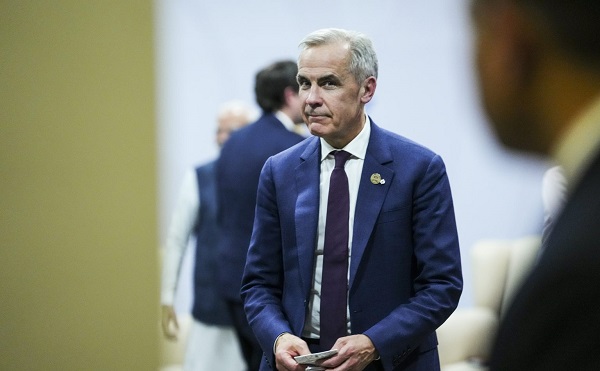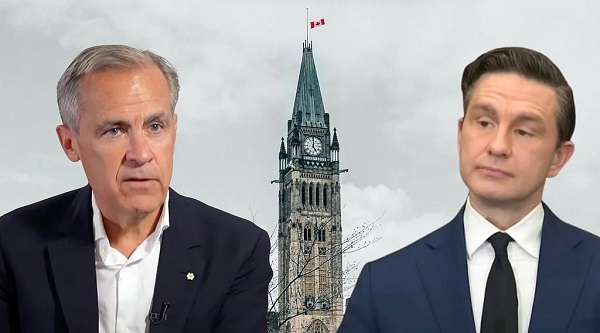COVID-19
Judge allows B.C. government workers’ lawsuit against COVID mandates to proceed

From LifeSiteNews
‘Our legal campaigns are a critical, precedent-setting fight to ensure the preservation of all workers’ employment and Charter rights in British Columbia and Canada for generations to come,’ celebrated the British Columbia Public Servants Employees for Freedom.
A court has ruled that a class action lawsuit launched against the provincial government of British Columbia on behalf of “all unionized” public servant workers in the province who faced persecution resulting from COVID mandates can proceed.
The court case will be heard in April of 2025, noted the British Columbia Public Servants Employees for Freedom (BCPSEF), a non-profit organization that assists public service workers in the province.
“Since October 2021, BCPS Employees for Freedom (BCPSEF) has led a campaign in defense of medical privacy and bodily autonomy on behalf of all public servants and our fellow British Columbians. This has involved raising awareness about the provincial government’s harmful proof of COVID-19 vaccination policy and undertaking a series of legal actions,” said the group in a press release.
“Our legal campaigns are a critical, precedent-setting fight to ensure the preservation of all workers’ employment and Charter rights in British Columbia and Canada for generations to come.”
The class action was initially brought forth by Plaintiff Jason Baldwin’s, with the BCPSEF explaining that now the “Baldwin class action has been merged together with a separate class action claim by unionized B.C. healthcare workers that is being supported by @UHCWBC.”
“Certification of both claims will be argued at 5 days of hearings scheduled in B.C. Supreme Court in Victoria beginning on April 7, 2025,” said the group.
Both class actions made the arguments that workers who refused the COVID shots and were discriminated against had their rights violated “under the Canadian Charter of Rights and Freedoms for imposing new terms and conditions of employment on existing and freely negotiated employment agreements absent collective bargaining, consideration, or consent.”
“The actions also claim breach of employees’ common law and statutory privacy rights, as well as misfeasance in public office by B.C.’s Provincial Health Officer, Dr. Bonnie Henry,” said the group.
The class action was initially filed in October of 2023. According to the BCPS, some 38,000 public servants were directly impacted by the B.C. provincial government’s “coercive and unjustifiable proof of COVID-19 vaccination mandate” which it noted caused “untold suffering and harm.”
Some 314 employees related to public service in the class action were fired for refusing to take the COVID shots, with another 175 placed on leave.
The NDP (New Democratic Party) government of British Columbia, which was just re-elected, had in place a COVID jab mandate for healthcare workers years after most provinces dropped theirs. It was not until July of this year that its chief health officer Bonnie Henry formally announced an end to the COVID jab mandate policy for those working in health care.
Many healthcare workers were fired or placed on leave for refusing to get the COVID shots.
Despite removing the mandates, the provincial government announced that it was creating “a vaccine registry,” forcing all healthcare workers to disclose vaccination status to their employer.
The class action by British Columbian public servants is just the latest in a string of lawsuits against provincial governments for enacting draconian COVID mandates which resulted in thousands of businesses going under as well as many people fired for not getting the shots.
As reported by LifeSiteNews, a recent class-action lawsuit on behalf of dozens of Canadian business owners in Alberta who faced massive losses or permanent closures due to COVID mandates has been given permission to proceed by a judge.
COVID-19
Crown seeks to punish peaceful protestor Chris Barber by confiscating his family work truck “Big Red”

The Justice Centre for Constitutional Freedoms announces that the Ontario Court of Justice will hold a hearing at 10:00 a.m. ET on Wednesday, November 26 at 161 Elgin Street, Ottawa, regarding the Crown’s attempt to permanently seize “Big Red,” the 2004 Kenworth long-haul truck relied upon by peaceful Freedom Convoy protestor Chris Barber and his family trucking business.
Constitutional lawyer Diane Magas, who represents Mr. Barber, is opposing the forfeiture.
“The impact of the forfeiture of ‘Big Red’, which is an essential part of the operation of Mr. Barber’s trucking business and is relied upon by Mr. Barber, his family as well as employees, is not what Parliament had in mind when enacting those forfeiture provisions, especially considering the context of a political protest where the police told Mr. Barber where to park the truck and when Mr. Barber moved the truck after being asked to move it,” she said.
Mr. Barber, a Saskatchewan trucker and central figure in the peaceful 2022 Freedom Convoy, depends on this vehicle for his livelihood. The Crown alleges that his truck constitutes “offence-related property.”
The November 26 hearing will address the Crown’s application to seize the truck and will include evidence regarding ownership and corporate title. The Court will also consider an application filed earlier this year by Mr. Barber’s family, who are asserting their rights as interested third parties and seeking to prevent the loss of the vehicle.
Mr. Barber was found guilty of mischief and counselling others to breach a court order following the peaceful Freedom Convoy protest, despite his consistent cooperation with law enforcement and reliance on legal advice during the events of early 2022. At sentencing, the Court acknowledged that he “came with the noblest of intent and did not advocate for violence,” emphasizing that Mr. Barber encouraged calm and compliance.
Mr. Barber said, “‘Big Red’ is how I put food on the table. I followed every instruction police gave me during the protest, and I never imagined the government would try to take the very truck I rely on to earn a living.”
COVID-19
Freedom Convoy protestor Evan Blackman convicted at retrial even after original trial judge deemed him a “peacemaker”

Evan Blackman and his son at a hockey game
The Justice Centre for Constitutional Freedoms announces that peaceful Freedom Convoy protestor Evan Blackman has been convicted of mischief and obstructing a peace officer at the conclusion of his retrial at the Ontario Court of Justice, despite being fully acquitted on these charges at his original trial in October 2023.
The Court imposed a conditional discharge, meaning Mr. Blackman will have no jail time and no criminal record, along with 12 months’ probation, 122 hours of community service, and a $200 victim fine surcharge.
The judge dismissed a Charter application seeking to have the convictions overturned on the basis of the government freezing his bank accounts without explanation amid the Emergencies Act crackdown in 2022.
Lawyers funded by the Justice Centre had argued that Mr. Blackman acted peacefully during the enforcement action that followed the federal government’s February 14, 2022, invocation of the Emergencies Act. Drone footage entered as evidence showed Mr. Blackman deescalating confrontations, raising his hand to keep protestors back, and kneeling in front of officers while singing “O Canada.” The original trial judge described Mr. Blackman as a “peacemaker,” and acquitted him on all charges, but the Crown challenged that ruling, resulting in the retrial that has now led to his conviction.
Mr. Blackman was first arrested on February 18, 2022, during the police action to clear protestors from downtown Ottawa. Upon his release that same day, he discovered that three of his personal bank accounts had been frozen under the Emergency Economic Measures Order. RCMP Assistant Commissioner Michel Arcand later confirmed that 257 bank accounts had been frozen nationwide under the Emergencies Act.
Constitutional lawyer Chris Fleury said, “While we are relieved that Mr. Blackman received a conditional discharge and will not carry a criminal record, we remain concerned that peaceful protestors continue to face disproportionate consequences stemming from the federal government’s response in February 2022.”
“We are disappointed that the Court declined to stay Mr. Blackman’s convictions, which are tainted by the serious infringements of his Charter-protected rights. Mr. Blackman is currently assessing whether he will be appealing this finding,” he added.
-

 Business1 day ago
Business1 day agoFederal major projects list raises questions
-

 International2 days ago
International2 days agoBoris Johnson Urges Ukraine to Continue War
-

 Great Reset2 days ago
Great Reset2 days agoRCMP veterans’ group promotes euthanasia presentation to members
-

 Health2 days ago
Health2 days agoOrgan donation industry’s redefinitions of death threaten living people
-

 MAiD2 days ago
MAiD2 days agoHealth Canada suggests MAiD expansion by pre-approving ‘advance requests’
-

 Business1 day ago
Business1 day agoBlacked-Out Democracy: The Stellantis Deal Ottawa Won’t Show Its Own MPs
-

 International2 days ago
International2 days agoTrump closes in on peace in Ukraine
-

 Daily Caller2 days ago
Daily Caller2 days agoEXCLUSIVE: Here’s An Inside Look At The UN’s Disastrous Climate Conference









